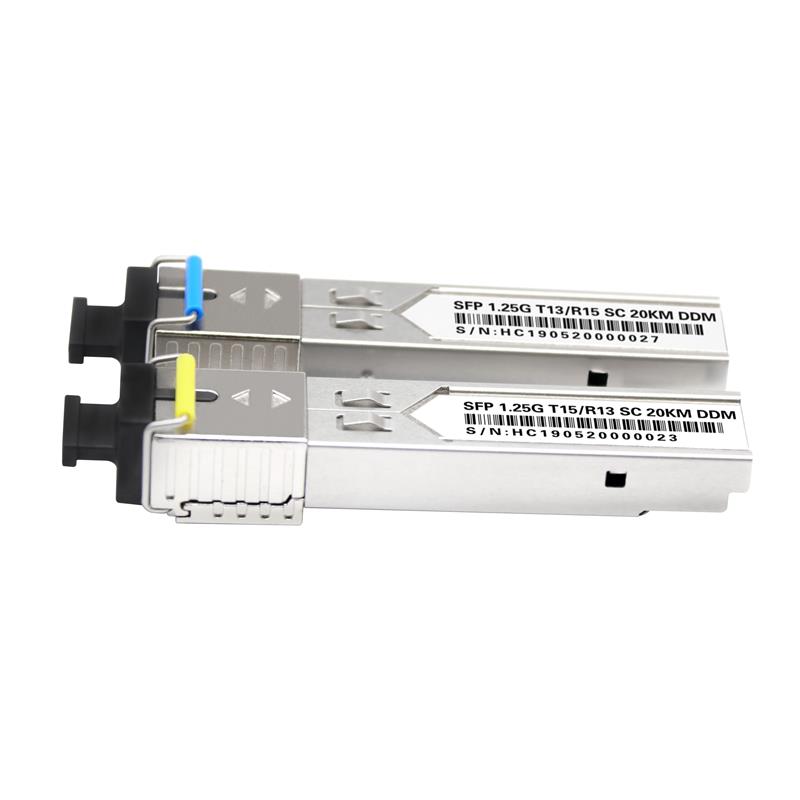Difference between single-mode SFP module and multi-mode SFP module
An optical module consists of a photoelectronic component, a functional circuit, and an optical interface. A photoelectronic component consists of transmitting and receiving parts.
To put it simply, the function of optical module is photoelectric conversion. The sending end converts electrical signals into optical signals, and the receiving end converts optical signals into electrical signals after transmission through optical fibers.
Single mode is represented by SM, suitable for long distance transmission, while multi-mode is represented by MM, suitable for short distance transmission.The working wavelength of a multi-mode optical module is 850nm, and that of a single-mode optical module is 1310nm and 1550nm.
Single-mode optical modules are used for long-distance transmission, with the transmission distance reaching 150 to 200km.Multi-mode optical modules are used for short distance transmission, with the transmission distance up to 5km.Single-mode optical modules are used for long-distance transmission, with the transmission distance reaching 150 to 200km.Multi-mode optical modules are used for short distance transmission, with the transmission distance up to 5km.
The light source of multi-mode optical module is light-emitting diode or laser, while the light source of single-mode optical module is LD or LED with narrow spectral line.
Multi-mode optical modules are mainly used for short-distance transmission, such as SR. There are many nodes and connectors in this kind of network. Therefore, multi-mode optical modules can reduce costs.
Single-mode optical modules are mainly used in lines with relatively high transmission rates, such as MAN ( Metropoliitan area network )
In addition, multi-mode devices can only operate effectively on multi-mode fibers, while single-mode devices can operate effectively on both single-mode and multi-mode fibers.
A single-mode optical module uses twice as many components as a multi-mode optical module. Therefore, the overall cost of a single-mode optical module is much higher than that of a multi-mode optical module.
A high-rate optical module cannot be used as a low-rate optical module. A high-rate optical module can be used as a low-rate optical module. Although some optical modules are compatible with other optical modules, others are incompatible.
The laser emitted by the single-mode optical module can all enter the optical fiber, but in the optical fiber is multi-mode transmission, the dispersion is relatively large, short distance transmission is ok.However, as the optical power of the receiving end increases, the optical power of the receiving end may be overloaded. Therefore, you are advised to use single-mode optical fibers instead of multi-mode optical fibers for single-mode optical modules.
Optical modules must be used in peer mode. For example, the transmission rate, transmission distance, transmission mode, and working wavelength of the optical modules at the sending and receiving ends must be the same. Interface specifications of optical modules with different transmission distances vary greatly, and optical modules with long transmission distances have high prices.The interconnection can be realized by matching appropriate optical attenuation according to the actual network situation.
When the sending optical power of the peer end is greater than the upper limit of the receiving optical power of the local optical module, you need to connect an optical attenuate the optical signal on the link, and then connect the local optical module.Long distance optical module For short distance applications, use optical attenuation, especially for self-loop applications, to avoid burning the optical module.
